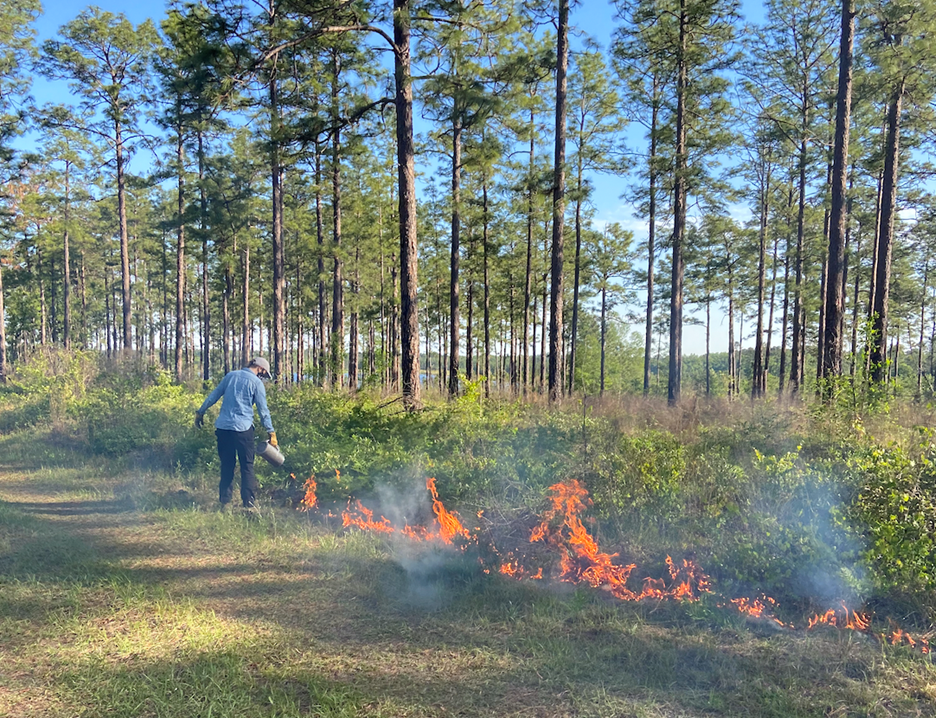When you think of a forest on fire, you aren’t usually thinking about what’s happening in the soil- but graduate student Ali Moss is. The Spencer Research Grant winner and Warnell School of Forestry and Natural Resources student’s research investigates the relationship between prescribed fire and carbon cycling, specifically studying an organic material known as pyrogenic carbon. This form of organic carbon appears when soil interacts with fire, and Moss intends to learn its secrets.
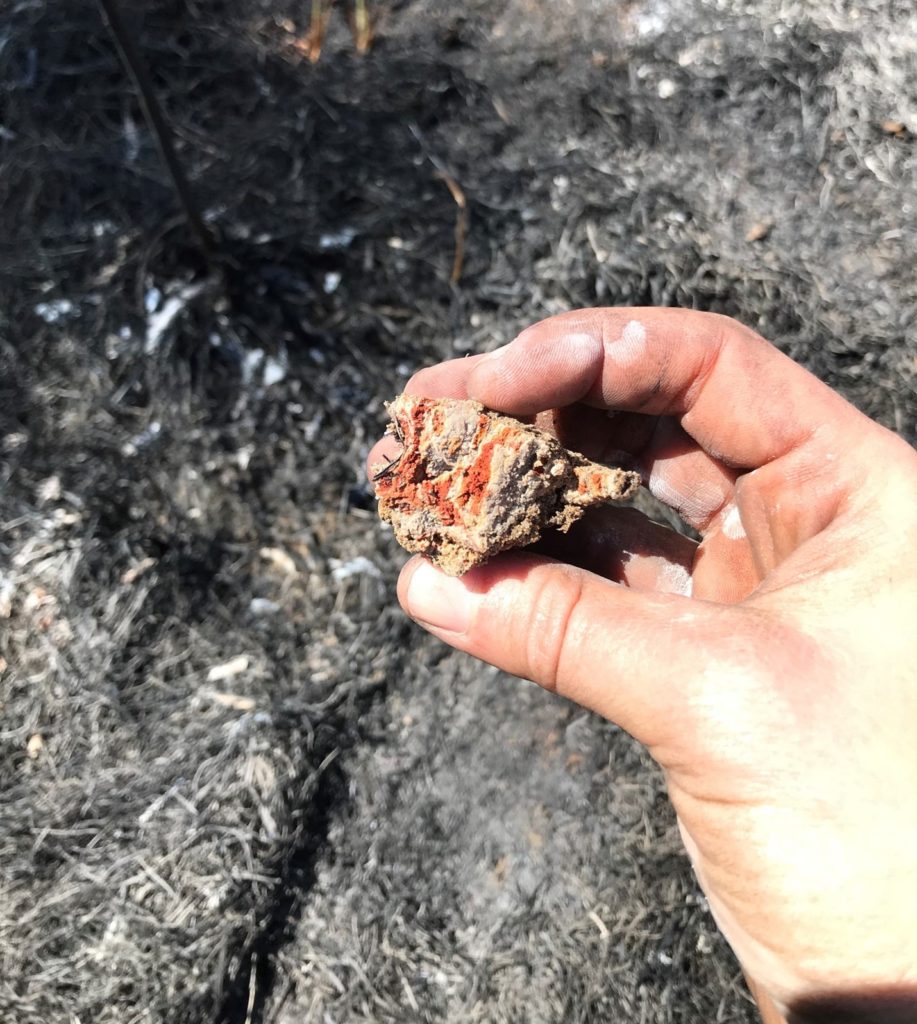
“One of the big areas of mystery is that pyrogenic carbon is present in rivers, and is travelling from rivers to the ocean,” Moss said, “but we don’t really understand the details of how it moves from soil to waterways, and we don’t really understand how it becomes dissolved.” Pyrogenic carbon tends to persist in soil longer than unburned organic matter. Researchers originally thought that this was because microbes couldn’t break down pyrogenic carbon, but this since been disputed.
“We know that pyrogenic carbon is harder for microorganisms to decompose than regular organic matter,” Moss explained. “But it’s always a mistake to underestimate microorganisms, because they can do, like, anything.” Moving forward, Moss hopes to characterize dissolved pyrogenic carbon in South Georgia forests managed with prescribed fire, and figure out how it makes its way into water.
There are several moving parts to this research: Moss and their team pull soil cores to get a profile of organic matter at different soil depths. Then, to investigate the connections between carbon in the soil and in the water, they pull water samples directly from the soil using lysimeters. They also do extractions of soil in water in order to test and compare two different methods for studying dissolved pyrogenic carbon in soil.
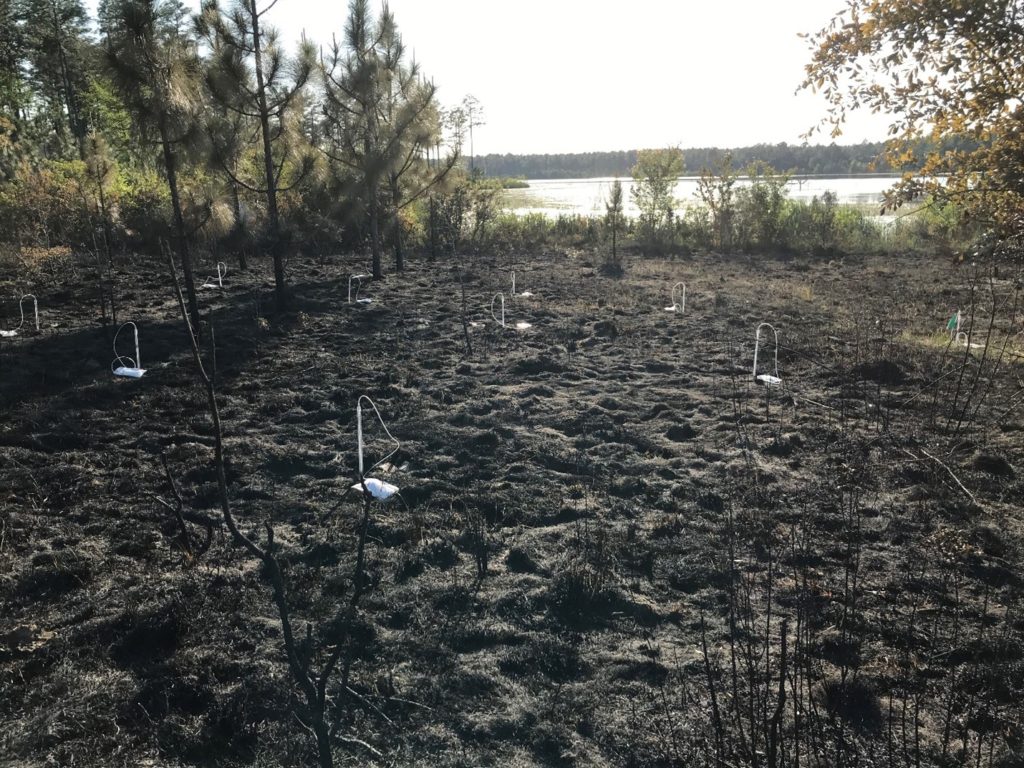
Another major question is simply how long pyrogenic carbon can last in the soil after a burn. “Because pyrogenic carbon hangs out in the soil longer, it might be an important carbon sink,” Moss said, explaining how carbon, pulled from the atmosphere by plants, may remain sequestered in the soil longer after it has been exposed to fire. “Some pyrogenic carbon does hang out in the soils for millennia, but most of it is probably cycling out within decades or centuries. So what are the controls on this? How can we get a better idea of what kind of sink pyrogenic carbon is and how would we quantify that?”
The experiment is currently underway near Tifton, Georgia and compares two stands of longleaf pine trees, one of which is not managed with fire, and one where Moss and their team performed a prescribed fire back in April of 2021. Prescribed fire is a forestry management technique that involves strategic burning. The practice brings a lot of known environmental benefits that are still being explored—and Moss is a big fan. “I think prescribed fire is awesome.” Moss said. “Getting to participate in prescribed fire I felt was really cool…It’s a really powerful tool.”
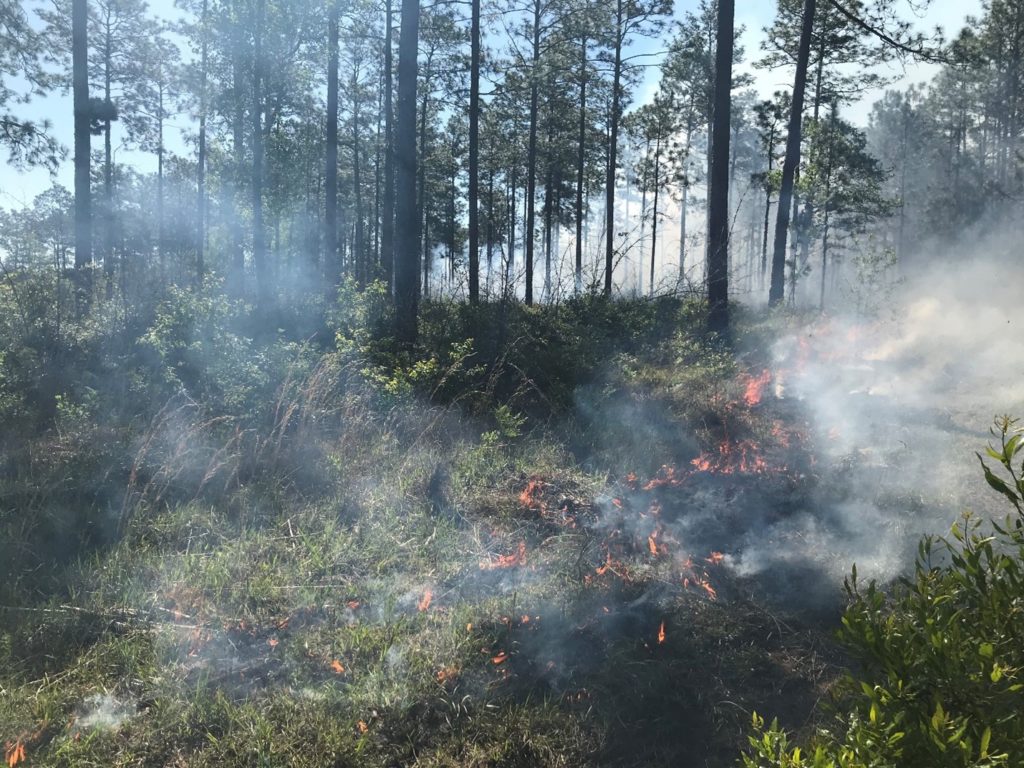
Part of her interest in the project stems from this enthusiasm for prescribed fire. “Despite its importance as a land management tool,” Moss said in their Spencer Research Grant proposal, “prescribed fire science remains underfunded compared to wildfire science, resulting in many knowledge gaps.”
Moss hopes her research may one day help inform forest managers how to regulate carbon through fire. “I love to talk to people about prescribed fires and spread the word about how awesome prescribed fire is.”
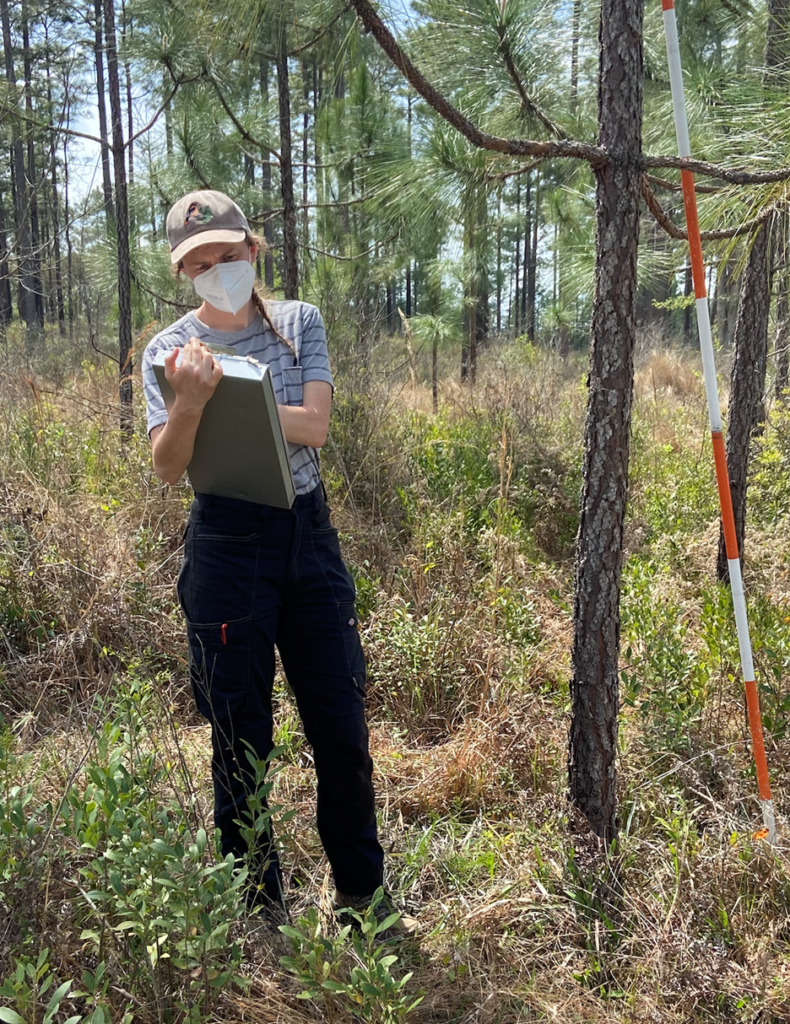
Moss’s research is funded by the Warnell School of Forestry and Natural Resources as well as a 2022 Spencer Research Grant. The grant is an annual award given to graduate students studying freshwater resource management and conservation. It is named for the late John Kyle Spencer, an Odum graduate student who was passionate about freshwater research. Moss’s project reflects a love for ecological science and conservation-focused management techniques.
Photos provided by Ali Moss. Story by Olivia Allen.

